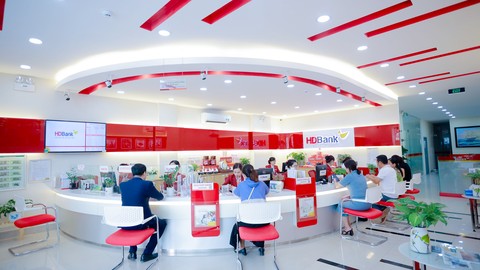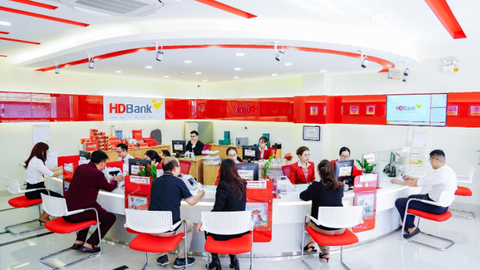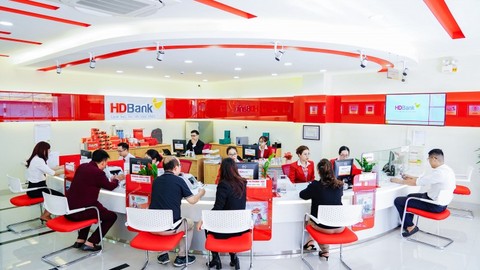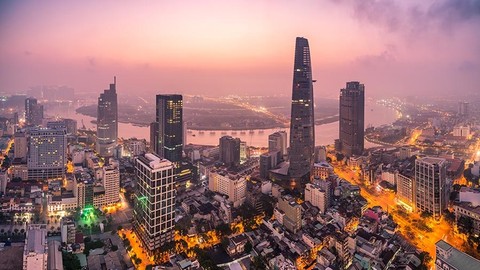Stephanie Betant – Head of Wholesale Banking, HSBC Vietnam Sharing at the Green Economy Forum & Exhibition (GEFE) 2022
Financing large scale renewable energy projects in Vietnam
In three years before COVID-19, Vietnam experienced one of the world’s fastest growth rates in investment in solar power. The country surpassed Thailand in 2019 to enjoy the greatest installed solar power capacity in ASEAN (according to Wood Mackenzie, a consulting firm in the energy industry), which skyrocketed from a mere 105MW in 2018 to 16,660MW in 2020, far exceeding government’s targets. This growth was driven primarily by attractive feed-in tariffs (FITs), which provide developers with a guaranteed price for a period of time, meaning “certainty”, which is loved by investors.
Most large-scaled renewable energy projects in Vietnam so far have been developed by domestic companies. Data from the Mekong Infrastructure Tracker suggests that c.60% of renewable energy projects in the country were developed entirely by Vietnamese companies, with a further 27% developed by a Vietnamese company with an international partner. Only 12% (or c.10 projects) were developed without a Vietnamese partner. Until now, almost of all investment into Vietnam’s renewable generation has come from domestic sources. The domestic capital market with lending rates (historically) in the range of c.10% has provided the necessary capital to jump-start projects under earlier FiTs, and similar to other emerging markets, the key to getting these projects off the ground was the ability to leverage existing banking relationships and corporate balance sheets to obtain financing. Since 2020, Vietnamese renewable energy companies have issued over USD3 billion worth of VND-denominated corporate bonds on the domestic market (estimated by Institute for Energy Economics and Financial Analysis - IEEFA). However, none have yet to approach the offshore market. There have been only seven international issuances by Vietnamese corporates from 2021 until now, mostly for real estate development.
While it's not yet exactly clear how much solar and wind are included in the final Power Development Plan 8 (PDP8), they are clearly set to rise. Now there is an arisen question on how to fund a large new amount of necessary renewable energy to achieve its net zero emissions by 2050. World Bank’s Country Climate and Development Report indicated that investments in the clean energy transition could reach USD15-17 billion/year from the current USD7-8 billion/year. In order to unleash our advantages and open up more opportunities for Vietnam in renewable energy, every player in the market has their own role to perform.
The role of FDIs
According to HSBC Research, Vietnam ranks highest as an investment destination for renewables in ASEAN owing to a number of factors including resource availability (solar/wind power), power demand growth and the government’s ambitious net-zero target by 2050, as well as renewables target in absolute terms (c.30% of energy generated from wind/solar by 2030).
Whilst PDP8 is still in draft form, it is expected this major investment will lead to a financing gap, for both EVN and independent power producers, creating a need for international financing inflows in the area that to date has heavily relied on local banks. Given constraints of onshore lenders, including credit growth caps and single borrower limits, the role of FDIs is expected to be significant as new (greenfield) projects begin their construction. Accordingly, financing could be under a number of forms, including:
• Export Credit Agencies (ECAs): a very common mean of financing projects around the world which involves importation of capital expenditure/services. In 2021, this form attracted USD115 billion of financing support globally. However, this type of financing is still limited in Vietnam to date, although there is the indicative appetite to finance new (greenfield) wind farms expected as part of PDP8 subject to the possibility of receiving local banks’ guarantee covering borrowers’ payment options;
• Development Financial Institutions: sharing the similar concerns as commercial lenders/ECAs on the bankability of the existing Power Purchase Agreement (PPA) and the regulatory framework to provide participation and risk sharing that is so important to their success; and
• Debt Capital Markets: as mentioned, Vietnamese renewable energy companies have issued bonds onshore, however, the offshore market currently remains untapped. International investors remain cautious of the Vietnam’s renewable energy market and also expect a local banks’ guarantee covering borrowers’ payment options to mitigate concerns on curtailment, termination, etc.
Although some European developers have established their presence in the market, it is their Asian competitors that have played the most catalytic role, taking into account that more than 90% of foreign companies investing in solar and wind power in Vietnam are from Asian countries, such as Thailand, Japan and the Philippines. They also play key role in providing the technical expertise and much-needed financial resources. Notably, more established Asian energy companies, like AC Energy (Philippines), Gulf Energy and B.Grimm Power (Thailand), have taken advantage of their resources to mobilize capital from multilateral development banks (such as ADB) to support local renewable energy projects.
It is very likely that local-foreign partnerships will dominate Vietnam’s offshore wind market as this takes shape. Given the potential complexities and sensitivities around offshore wind projects, major global offshore wind players have already cooperated with local development partners for their maiden projects in the country. For example, Orsted, the world's most sustainable energy company, is partnering with T&T Group, a leading Vietnamese cross-industry company, for the joint development of approximately 10GW offshore wind project in Ninh Thuan and Binh Thuan Provinces.
The existing PPA’s concerns
From HSBC’s position, we have experienced and learnt from our communications with different stakeholders that there are arisen key bankability concerns with the existing PPA, including:
• Dispatch and Curtailment Risk: The current PPA does not protect sellers in case that a plant can generate power but EVN fails to accept the power. Besides, the access to historical data on curtailment is limited, making it difficult to take a view on future cash flows, which is very critical especially for non-recourse project finance type structures, hence it comes with the need for corporate/local banks’ guarantees in its current form;
• Regulatory Risk: PPA does not expressly protect sellers against changes in law. Projects, therefore, may be exposed to adverse changes in law, which may also affect visibility on future cash flows; and
• Force Majeure (FM) and Termination: There are no contract term extensions in the event of an FM or EVN does not make payments. For example, the current PPA template for solar power limits damages to one year of revenues. Further, the current PPA for wind power is not clear if it would cover the full cost of senior debt in the event of termination, including any associated break costs as the formula relates to ‘direct loss’, which could refer to only missed payments under the PPA.
HSBC's recommendations
As a leading international bank, HSBC together with other financial institutions has been actively discussing with Vietnam’s government and its regulators on how changes to the existing framework would create a more favorable/enabling environment for foreign/international capital.
Additionally, as a member of Glasgow Financial Alliance for Net Zero (GFANZ), HSBC is also a part of a private sector working group currently working with the UK’s government on a potential Just Energy Transition Partnership (JETP) for Vietnam. COP26 President Alok Sharma and Vietnam’s MONRE Minister Tran Hong Ha recently met at COP27 in Sharm El-Sheikh to discuss the progress, noting ongoing discussions had deepened respective understanding of the challenges and opportunities of a low carbon transition in Vietnam and how the parties might work together to address these going forward. Looking into the local side, Vietnamese financial institutions have strongly developed through years in a fast pace. They have competency and capabilities to make differences, therefore, HSBC is open and welcome the strategic partnership with local banks to support Vietnam in green energy transition.
International policy work is also underway to advance infrastructure as an asset class and to advance sustainable infrastructure. The ‘Finance to Accelerate the Sustainable Infrastructure’ (Fast-Infra) aims to establish a consistent, globally applicable labelling system for investments in a variety of sustainable infrastructure assets including renewable energy and power & electricity transmission/distribution. Through this labelling system, the market can easily signal the sustainability of the asset, and investors can trust that their money is going to projects that meet environmental, social, resiliency, governance needs and contributing to the SDGs.
With improved bankability conditions/amendments to the current PPA, HSBC expects a significant inflow of FDIs into the renewable energy space similar to other sites in the region. For example, HSBC recently acted as lead financial advisor to Orsted on the sale of its Greater Changhua 1 offshore wind project in Taiwan (Asia Pacific’s largest market for offshore wind) with stapled financing (including ECAs and private sector finance) for a total transaction value of USD2.7 billion. We have also played a major role on bond issuances for renewable energy players in India including India Green Power, Azure Power and Renew Power.
Last but not least, issuances of green, social, sustainability and sustainability-linked (GSSS) bonds to Vietnam market could be a plus for Vietnam, improving the country’s ESG scores and attract increasingly sustainably-minded international investors. From HSBC’s global experience, Uruguay, a Latin American country, recently earned a big applause by the market when successfully completing a sustainability linked deal. In addition, it has been proven that the process of developing GSSS frameworks is an excellent way to get multiple departments of planning, financing and spending aligned and enthused around the sovereign efforts and the mission to generate a better future.



















